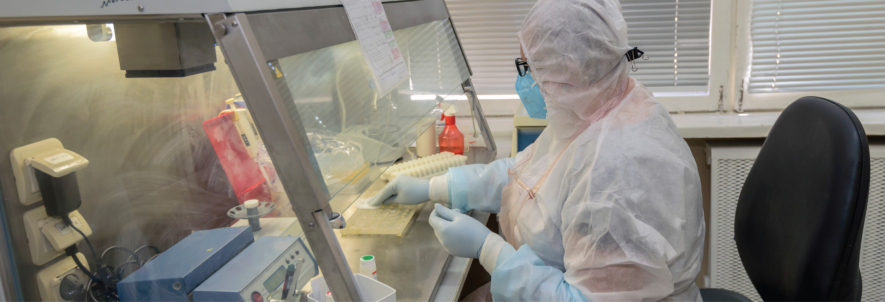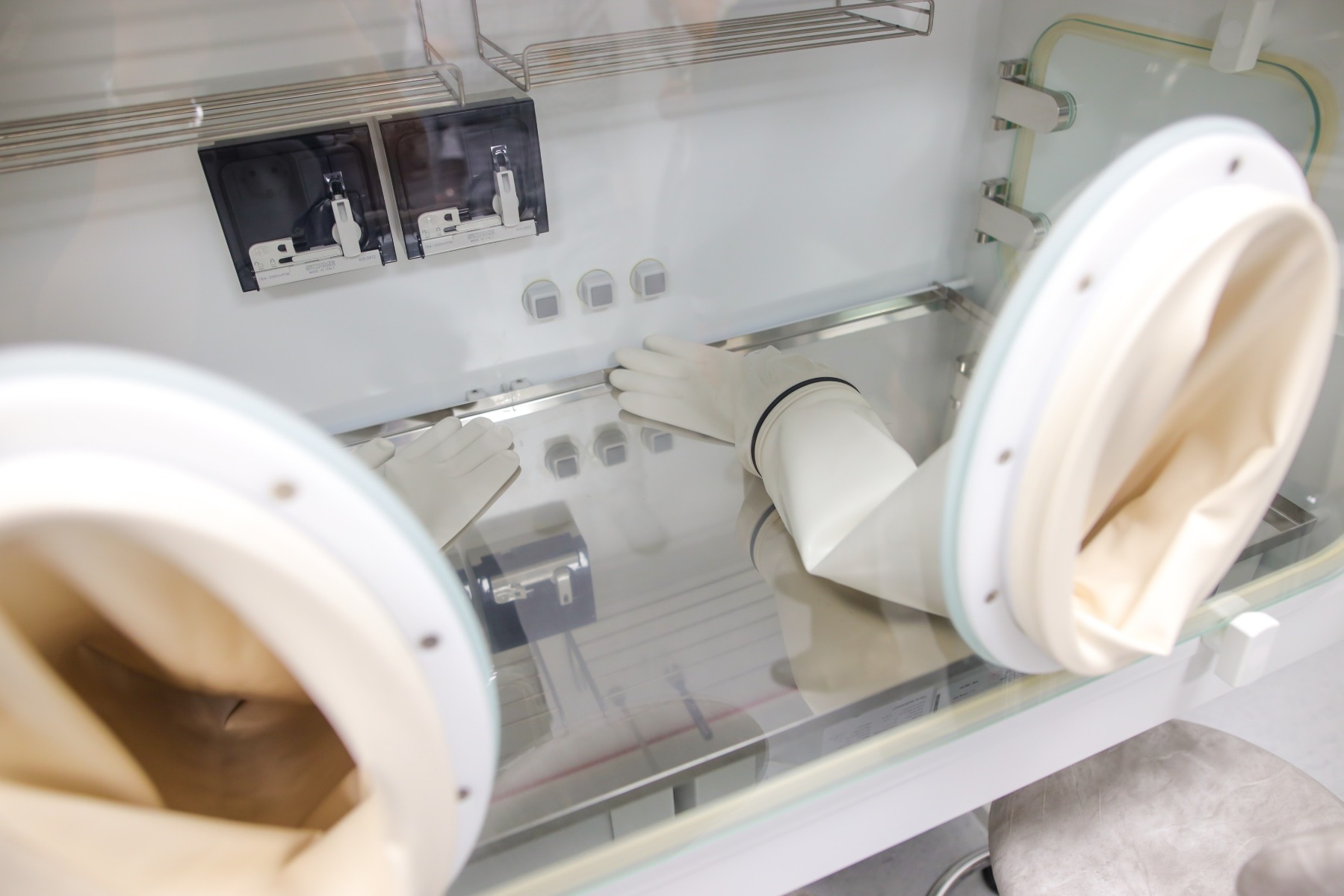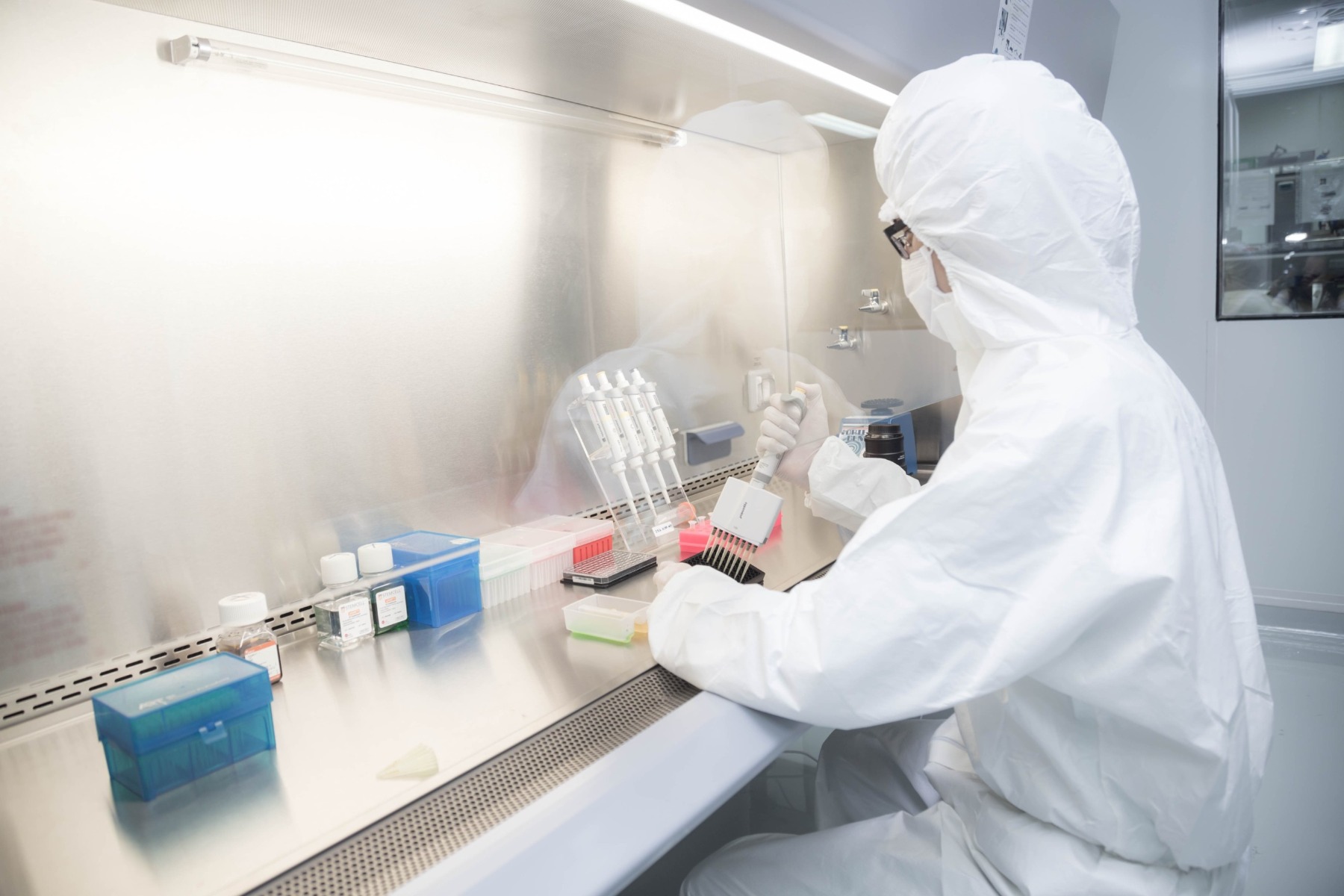
When people need to work with contagious and deadly pathogens (i.e., bacteria and viruses), they need a safe and clean environment in which to work. Biosafety cabinets are an excellent solution because they offer various amenities while keeping both the worker and the surrounding area clean and hazard-free.
Because biosafety cabinets are so vital for working with pathogens, we wanted to take a closer look at how they operate and what steps workers and employees can take to keep them clean.
What is a Biosafety Cabinet (BSC)?
A biosafety cabinet is a fully-enclosed laboratory unit designed to house pathogens and other toxic materials. The primary purpose of a BSC is to provide a clean, sterile environment to work in and study the pathogens without the risk of contaminating the surrounding area. One core element of a BSC is the use of a HEPA filter. This filter ensures that these toxic elements remain within the cabinet and don't spread.
Biosafety cabinets are broken down into three classes: I, II, and III. Here's a breakdown of each type and how it works.
Class I Cabinet
These cabinets are the least used because they don't offer any "product" protection, with the product being the bacteria or virus sample. Although HEPA filters ensure that the air coming out of the cabinet is clean, unfiltered air comes in, contaminating the product. Usually, Class I cabinets are used to house specific equipment like a centrifuge.
Class II Biosafety Cabinets
This class offers product protection, and these cabinets can be broken down into various sub-classes, including A1, A2, B1, B2, and C1. The different subcategories of Class II cabinets refer to the amount of airflow and recirculation inside the unit. The most common type of Class II cabinet is A2, but each subcategory has a particular application. For example, B2 cabinets don't recirculate air, instead they use a duct exhaust system to remove contaminants and pathogens. These cabinets are primarily found in toxicology labs because they're expensive to operate.
Class III Biosafety Cabinet
This class is the most secure, offering gas-tight seals and built-in gloves for working. Class III cabinets are often called glove boxes because of this setup. To prevent lab contamination, these cabinets use a dunk tank or double-door autoclave to trap pathogens and harmful particles. Class III cabinets are only used in maximum containment labs, such as those that work with BSL-4 pathogens (the most dangerous kind).

Which Industries Use BSCs?
Industries that work with pathogens and biological agents need to use biosafety cabinets. Examples can include:
- Toxicology Labs
- Criminology Labs
- Universities and Institutes
- Research Labs
Common Types of Contamination Found in a BSC
As you can imagine, it's essential to maintain a sterile work environment inside a biosafety cabinet. Unfortunately, unsafe practices can cause various types of contamination, such as:
- Spills
- Cross-Contamination of Products
- Dirt and Grime
- Mislabeled Materials
Also, because most BSCs create an "air curtain" to prevent pathogens from escaping, any biological elements in the air can wind up on all surfaces within the cabinet. For that reason, it's crucial to replace filters and clean the cabinet regularly. In most cases, human error is the cause of contamination, which is why it's so vital to have a biosafety cabinet cleaning procedure in place.
Safety Measures and Best Practices When Using a BSC
Because biosafety cabinets are used for delicate and hazardous materials, workplaces must implement various best practices and cleaning procedures. Here's a rundown of how to use BSCs safely to protect both workers and products.
Use Checklists
A checklist is an essential tool for many complex jobs with multiple steps. Having workers follow a checklist system ensures that they don't forget crucial steps. Even if workers have done procedures many times before, it's easy to miss or forget something. Because of the dangers posed by cross-contamination within the lab, carelessness is not an option.
Test Airflow and Ventilation Before Use
BSCs should have sensors and warning systems in case the airflow gets interrupted or stops suddenly. Workers should run the air for a few minutes to ensure that these systems are working properly. If they are not functioning, the employee should notify a supervisor immediately.
Only Use BSCs as Intended
As we mentioned, there are different classes of BSC, which can be divided further into subcategories. Workers should be aware of the capabilities and limitations of a biosafety cabinet before performing any work inside of it.
Don't Disrupt the Air Curtain
The cabinet's airflow is crucial for maintaining a safe work environment. If employees disrupt the air curtain too much, they could potentially cause contamination of both the lab and the products. As a rule, employees should move perpendicular to the front of the cabinet as much as possible. This way, they don't break the airflow too much at one time.
Replace Air Filters Often
HEPA filters are essential for a well-functioning BSC, but these filters can get contaminated quickly. There should be a replacement schedule based on the amount of use a cabinet receives. Be sure to read up on manufacturer recommendations as well.
Shut Off UV Lights Before Working
While UV lights can provide some level of sterilization, they can also be a health and safety hazard while working inside the BSC. Employees should shut off all UV lights before working to prevent potential risks.
Store Supplies and Equipment Outside the BSC
Before employees start working within the cabinet, they should know which items to bring in. According to OSHA, workers should only bring the items necessary for immediate use. The cabinet is not designed for long-term storage, as doing so could interrupt the airflow and lead to contaminated surfaces.
Use the Correct Biosafety PPE
The type of personal protective equipment necessary for use in a BSC depends on the nature of the work involved. However, here's a rundown of the various PPE options that should be available to workers at all times:
- Gloves
- Full-Body Coveralls
- Face Mask and Face Shield
- Eye Protection (e.g., goggles or glasses)
Although the cabinet itself provides adequate airflow, some situations may require a self-contained breathing apparatus (SCBA). These devices should be worn in cases where pathogens may escape into the lab environment.

Dispose of PPE Properly
Once employees are finished working inside the cabinet, they should dispose of their PPE according to CDC and OSHA waste guidelines. Workers should never reuse PPE. Some materials, like an SCBA, must be cleaned thoroughly before reuse because they are not disposable.
Clean and Decontaminate the Cabinet Regularly
One question to ask employees is, "what steps should you take to decontaminate a BSC after you finish working?" Typically, the best option is to wipe down all surfaces with cleaning materials while the blower is still running. In many cases, workers should use a solution of 10 percent bleach, followed by a solution of 70 percent ethanol. It's crucial to put these liquids on a sterile pad or wipe. No one should spray bleach or ethanol inside the cabinet.
While wiping the surfaces works well for everyday use, you'll also need gas decontamination for a more comprehensive solution.
What is Gas Decontamination?
Instead of using wipes and cleaning solutions to sterilize surfaces, gas decontamination uses aerosolized gas to permeate the cabinet and kill any bacteria or viruses that may be present. This decontamination method works well for ensuring that the cabinet stays sterile at all times. However, the gas will not remove surface dirt or grime.
Several gases can be used for decontamination, but chlorine dioxide is the most common. The advantages of chlorine dioxide include:
- No Condensation - Since this is a "true" gas, it won't bind to water vapor in the air and create condensation.
- No Toxic Byproducts - Chlorine dioxide produces oxygen and salt, so workers don't have to worry about secondary contamination after spraying the gas.
- Fast Application and Cleaning - Typically, chlorine dioxide decontamination takes up to 90 minutes for application and another 30 minutes for scrubbing afterward.
That said, chlorine dioxide can potentially lead to some metal corrosion, so workers have to be careful to avoid corroding the inside of the cabinet. If chlorine gas is present, this problem can be much worse.
Another downside of chlorine dioxide is that it's unsafe for workers, so no one can be inside the lab during the decontamination process. Therefore, it's best to schedule this procedure outside of regular lab hours if possible.
When Should Workers Use Gas Decontamination for BSCs?
There are several reasons why gas decontamination may be necessary, such as:
- Relocating the Biosafety Cabinet
- Disposing of a BSC
- After a Large Spill
- Before System and Sensor Tests
- Before Filter Changes
Because of the nature of gas decontamination, regular workers should not conduct the procedure themselves. Instead, it's better to use a third-party provider that can guarantee their work. Professional gas decontamination companies will also have the right tools to complete the job correctly.
Health and Safety Risks of BSC Cleaning and Maintenance
There are several inherent dangers of cleaning and maintaining a biosafety cabinet, such as:
- Spread of Infection - If pathogens escape into the lab, workers can get infected. In worst-case scenarios, employees may transmit these pathogens to others outside of the lab, causing an outbreak.
- Spills - Even the most careful person can make mistakes. While wiping the BSC down, workers may inadvertently cause a spill or cross-contamination event.
- Cross-Contamination - Sometimes, employees might cross-contaminate multiple products within the cabinet. Doing so can potentially create newer, more dangerous pathogens or ruin each sample entirely.
Contact International Enviroguard for Your Biosafety Cabinet PPE Today!
Biosafety cabinets are an essential piece of equipment in your lab. You need high-quality PPE to ensure that your employees are safe and sterile while working. Browse our selection of PPE products and schedule a call with our team today!